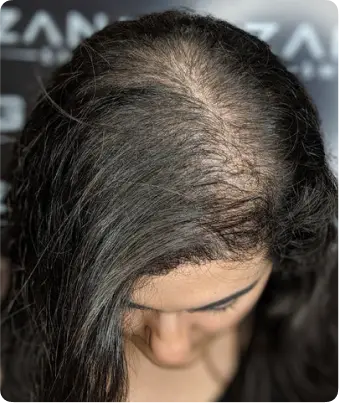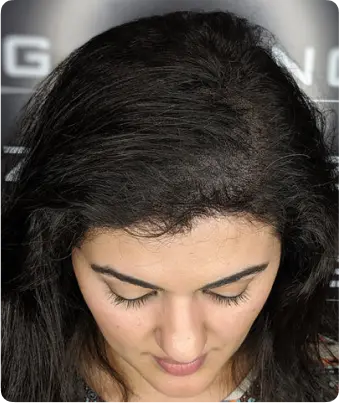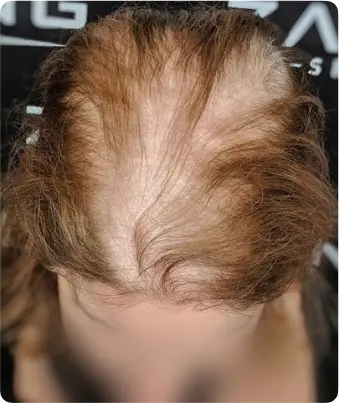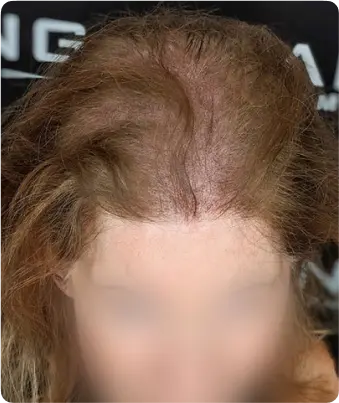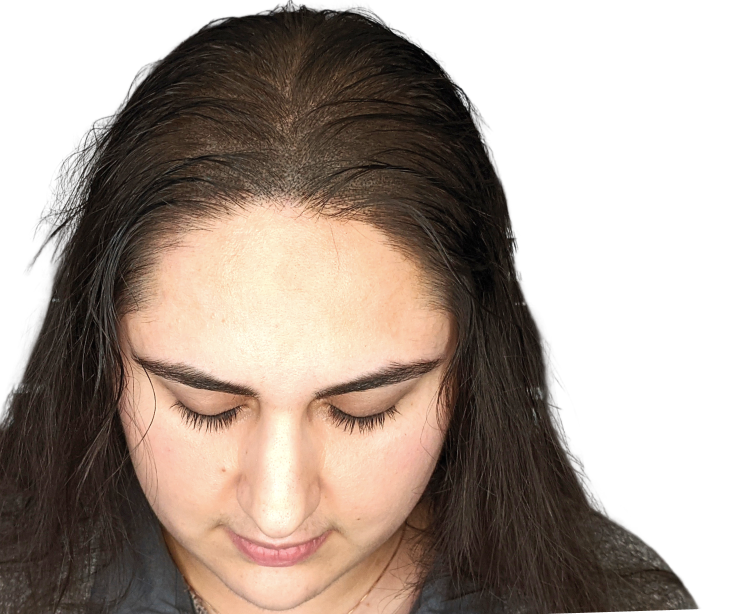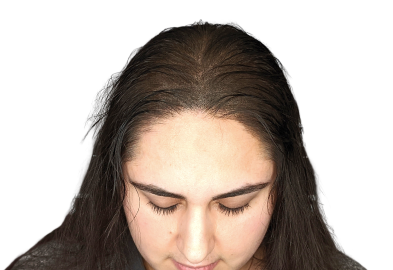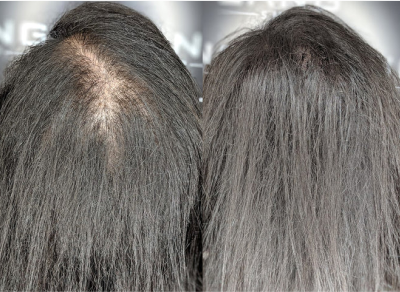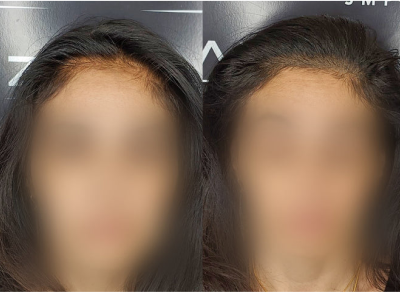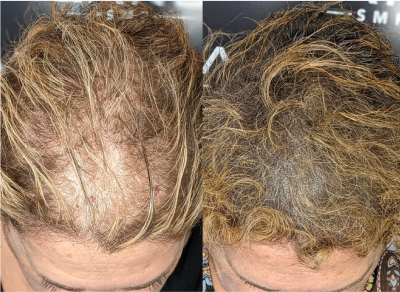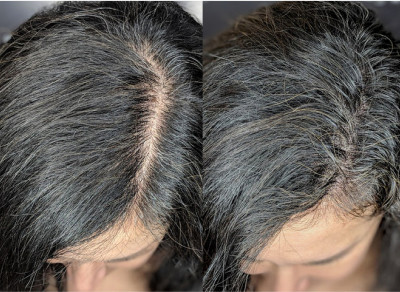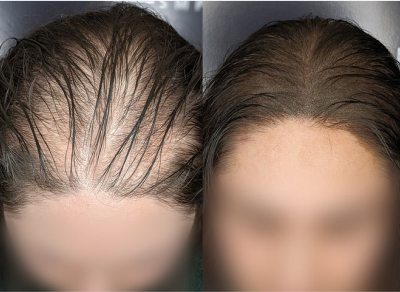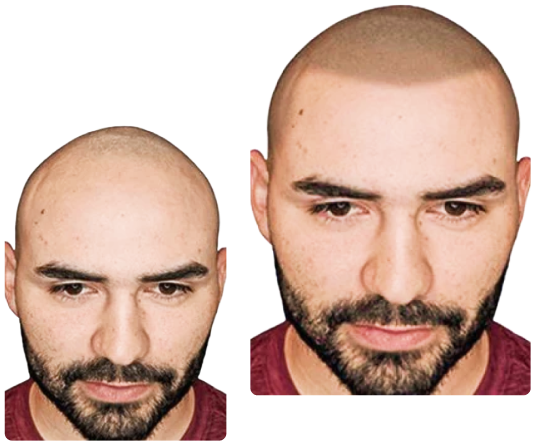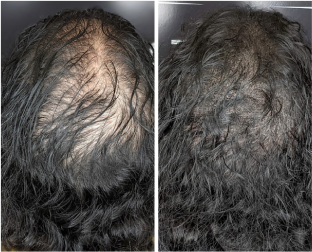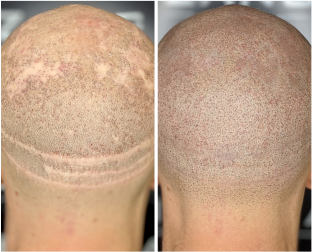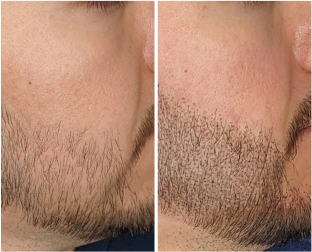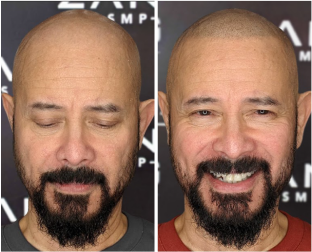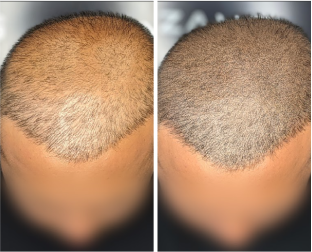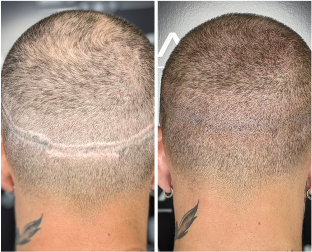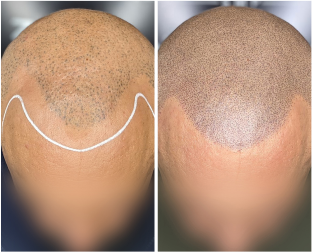Stages of Female Hair Loss
The Ludwig scale identifies the stages of female pattern hair loss. Stage 1 starts with scalp visibility when parting the hair.
In Stage 2, thinning increases at the center of the scalp. By Stage 3, thinning becomes widespread. Another condition is traction alopecia, often caused by tight braids, leading to permanent edge hair loss.
Treatment For Female Pattern Hair Loss: Scalp Micropigmentation
If you’re dealing with hair thinning, Scalp Micropigmentation (SMP) might be the answer! It’s a non-surgical treatment that uses organic pigments to mimic hair follicles on the scalp. You’ll walk out with results right away—no downtime needed.
At Zang SMP, we make sure the pigments look just like natural follicles, so you get a fuller, denser hair appearance without surgery or transplants. SMP works wonders to mask bald spots and enhance your overall look.
The process is simple and requires two to three sessions. The first two are spaced about a week apart, targeting thinning areas. If any adjustments are needed, a final session takes place one to three months later to perfect the results.
Would a Hair Transplant Treat Hair Loss?
For most people dealing with female or male pattern hair loss, hair transplants are not always the most viable option. Donor grafts are essential for this procedure, but when the entire scalp experiences thinning, they become difficult to obtain.
Additionally, grafting hair in areas where hair already exists can harm native follicles, sometimes leading to worsened hair density.
Scalp micropigmentation (SMP) is a revolutionary alternative that avoids these risks. It safely restores the appearance of thicker, denser hair without surgery, follicle damage, or downtime. The results are natural-looking and immediate.
At Zang SMP, we offer unmatched quality and expertise in scalp micropigmentation. Our team’s skills ensure you achieve natural results that transform both your appearance and self-confidence.

